Treatment for Emergency Patients
This blog post is going to cover emergency visits for patients and strategies for doctors to help the patient when the appointment is unplanned.
There can be limited time on the schedule because sometimes patients will call when a tooth breaks- and it never breaks at a convenient time for anyone. The emergency visit needed isn’t necessarily an emergency from trauma. The patient calls either because they’re having pain or they’re aware that the tooth broke and it’s rough and there’s a concern about how it feels or how it looks.

What to do when the patient arrives
So the first thing is we need to get proper X-rays, especially if this is a new patient. Make
sure that you’ve got x-rays of the tooth in question and and any other images needed.
Typically you will need a Periapical X-ray and updated bitewings. If it is a new patient with
no records , ideally start with a Pan and bitewings.
Why take an X-ray?
There are two reason you should take a periapical x ray of the tooth and bite wings (and
even better to also have a Pan) for a patient that you are seeing for the first time. The PA
will help you see the roots of the tooth in question that we believe is the source of the
problem, but taking the other bite wings will help share details about any other concerns the
patient may be having about decay.
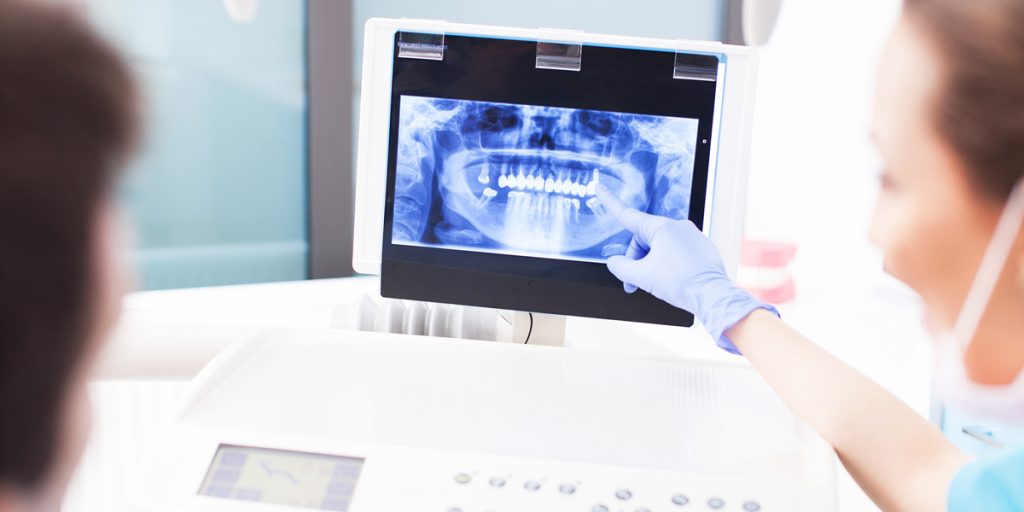
And this might be teeth adjacent to the tooth in question. It may be teeth in the opposing arch. It might be teeth on the other side of the arch, but this can certainly affect the treatment plan.
Let’s say it can affect the treatment plan because there could be other findings that might impact the treatment for the tooth in question, for example, let’s say the tooth in question needs a root canal.
If it’s the only tooth that needs work, then we might talk about doing a root canal and a crown. But if we take some bitewing X-rays and find that there are six other teeth that need root canals, we need to talk about how this tooth fits into the overall treatment plan and whether there may be some extractions indicated here or other restorative options.
The patient may want some extractions and a partial denture if it becomes financially difficult to perform six root canals and crowns. Better if the patient has an idea of all of their needs and how treatment for the tooth in question will impact followup care as well.
Another good reason to have the panorex is that many insurances will require it for preauthorizations for treatment such as a denture or bridge.
The other reason to image more than the tooth in question is once we identify the treatment needs to be completed and resolve it, we want the patient to leave knowing what other work needs to be done.
Why do they need to come back?
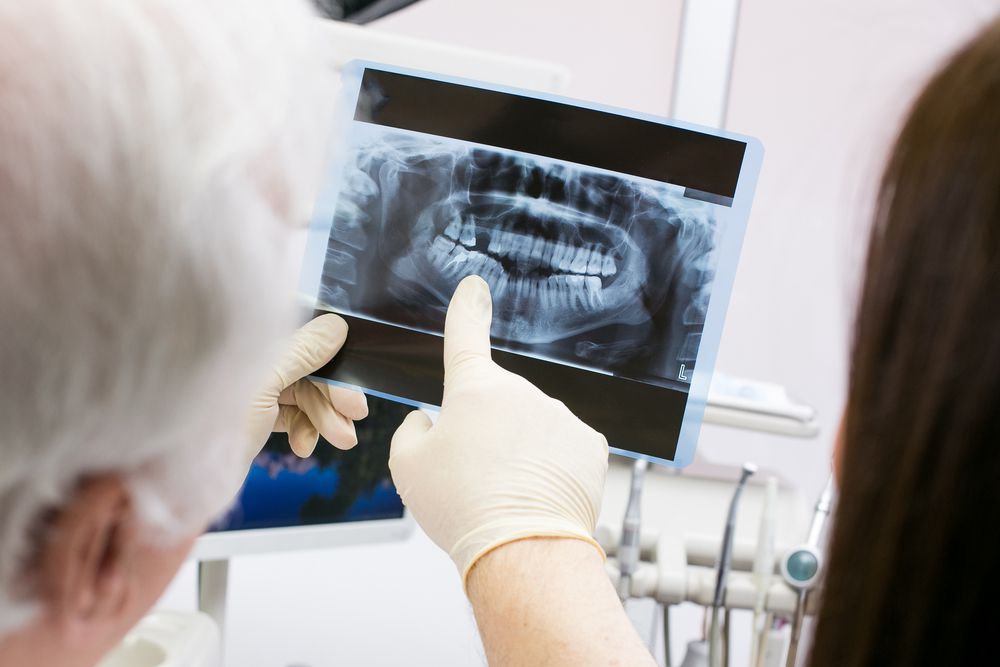
To prevent another emergency from happening. They can come back for a cleaning for the their perio health, which is certainly something that needs to happen, but if there is a cavity that’s large that might turn into a tooth ache, we will also want to schedule another appointment to address the issue with the second tooth quickly as well.
Better to prevent fires in the future than have to put them out after there is an emergency.
What to do after the x-ray
Once we take the X-ray, we need to figure out what’s causing the pain on that tooth.
We need to check the vitality of the nerve and see if the tooth is abscessed.
The first test we often do is the percussion test. You can take the opposite end of a mirror handle and tap on teeth, starting with teeth adjacent to the tooth in question and working our way back and also checking teeth in the opposing arch. Never start with the tooth in question- you want to get a sense of what normal is to recognize when a tooth is more sensitive.
And we may find that each tooth we check and record during the tapping is either percussion normal or percussion sensitive, and that’ll give us some indication of how each tooth is responding.
There’s also a thermal test. We can take some endo ice, spray it on a piece of cotton held by cotton pliers from a cotton roll or use a cotton tip applicator, spray the endo ice on the cotton, and then touch several of the teeth.
You tell the patient it’s going to feel cold, but just let us know if you feel it, whether you feel it or if you don’t, it’s okay. Just let us know. If you do feel it, we’ll take it away and then we’ll just ask if the cold sensation goes right away, or does it linger?
Sometimes a tooth will have no response. This could be avital or just not sensitive to cold.
There could be a quick response that goes away, which is normal, or a lingering response that might remain sensitive five to 10 seconds.
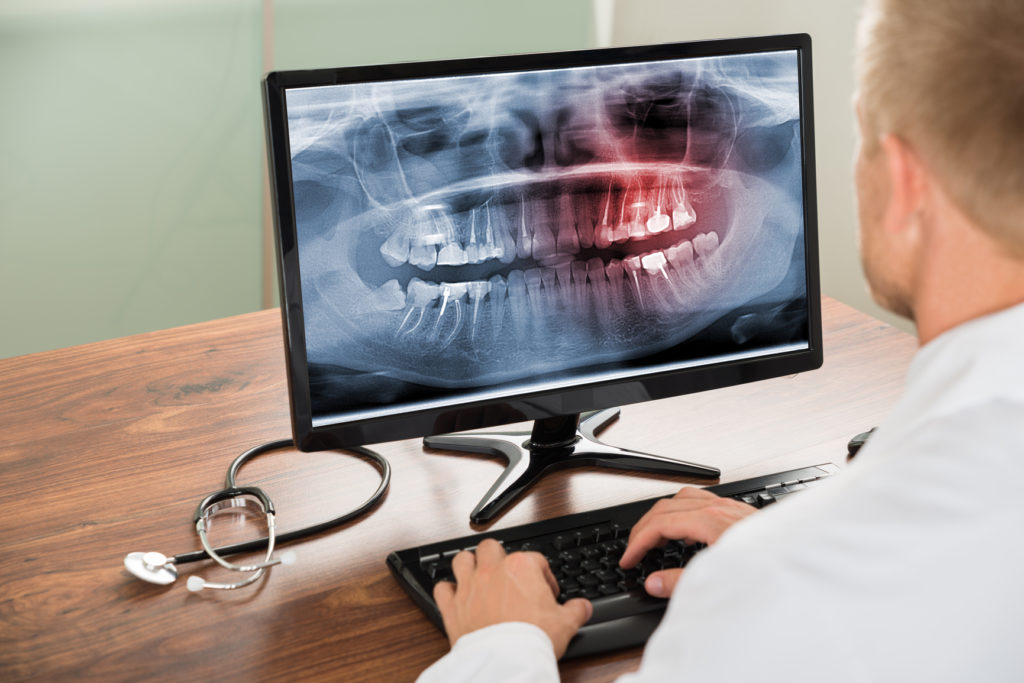
This gives us some clues about the health of the tooth too, if it has a cold response, there may be some vitality, but if it’s a lingering sensation, it may be an irreversible pulpitis.
Also, there’s an EPT test that we can use if we want to do further testing, but this isn’t used as frequently.
Typically if a tooth has a normal quick response to cold that doesn’t linger and is not sensitive to percussion- the tooth is vital and responding normally. If the tooth is sensitive to percussion and has no response to cold- it could be avital or necrotic and in need of endo.
Or if it’s sensitive to percussion and has a lingering sensation to cold- it could be irreversible pulpitis also indicating endodontic therapy is needed. If we determine a root needed, we’ve got a couple options.
If there’s swelling and pain, we may choose to medicate the tooth to help with the pain until more treatment is able to be done.
We might do a pulpectomy or pulpotomy just to open the tooth and take some of the pressure off of the tooth and then decide to do the rest of the procedure later or refer, or we may just come back to do the procedure ourselves or refer the procedure to be done by another provider.
If there’s any kind of biting pressure. If the patient says it hurts when they bite down, especially on hard foods, we might suspect a crack in the tooth, and this could be in a tooth that’s completely unrestored.
So we really want to be confident in our diagnosis before we recommend any treatment like a crown on an unrestored tooth for cracked tooth syndrome.
A tooth slooth is a great tool to check the cusps to locate a cracked tooth. Basically have the patient bite on each of the cusps of the molar or premolar and in the fossa.

And if we can consistently get a sharp, quick pain sensation, especially on releasing the
biting pressure, if we consistently get it on a single cusp, we may suspect that that tooth is
cracked. You may find this on a distal-lingual cusp of tooth #30 that has an MOD Amalgam
for example.
A crown would be indicated if the nerve is healthy and the pain is just simply triggered by
biting pressure.
But we should always warn the patient that endo may also be needed. And sometimes it’s not easy in the general office to do this test, but if you have some orthodontic bands, sometimes placing an orthodontic band can help support the tooth until a crown is done by encircling the tooth similar to how a crown would help..
Also adjusting the occlusion on the cusp of the tooth that’s cracked is good to take some pressure off of it.
Is the patient having sinus issues?
It’s also important to ask and just to be aware of any sinus issues the patient may be going
through.
Have they had any seasonal allergies or colds? Certainly any kind of sinus inflammation can
sometimes cause sensitivity for maxillary posterior molars. .
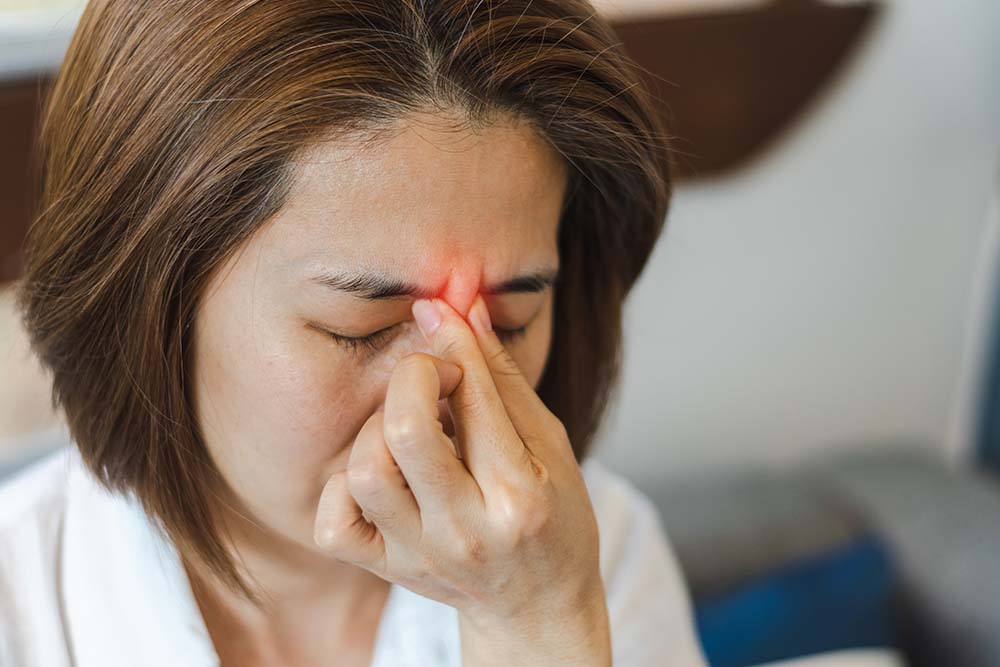
I always like to show the sinus on the X-ray and where the roots of the molars ar relocated.
It’s easy to visualize how the nerves from the roots of the molars go right along the floor of the sinus, and if there’s any inflammation in that sinus area, it can make a maxillary molar hurt.
Be on the lookout for occlusal trauma

Be aware of occlusal trauma.
By that, there could be sensitivity related to bruxism. Patients often grind during the night.
If they have a cold, these breathing issues could trigger more grinding at night. Sometimes
certain medications trigger bruxism.
There are many reasons our patients may clench, and that pressure on the teeth can bruise the ligament around the root of the tooth and cause some soreness. Some patients may find it hard to believe bruxism could trigger a tooth ache. A patient may visualize this situation better reminding them, it’s similar to when orthodontic patients have their braces tightened, and that pressure on the teeth can cause some initial soreness.
If we have checked for cracks, abscess, sinus issues and everything seems ok- we could have a toothache just from grinding on the tooth. And so if we suspect that is the case and if we see wear facets on some teeth, then we might want to suggest using a night guard. An anterior night guard, like an NTI style night guard, could help give time to let things settle down and take some pressure off of that tooth. (Or give time for the problem to localize more of an abscess just hasn’t shown up on an X-ray yet).
It also is helpful when there are occlusal issues suspected to try some articulating paper and see if there’s a cusp that has heavier contact than the others and if it looks like there’s more pressure on that tooth. Try marking lateral movements as well. This can also help to use the occlusal paper when we suspect a cracked tooth to see where the occlusal contacts are hitting- if there is pressure on the tooth cusp that’s is suspected to have a crack- we will want to adjust it slightly.
Broken tooth without pain
Sometimes patients will come in and they’ll have a broken tooth but no pain.
Maybe they had an MOD amalgam and a cusp is broken off and the patient is concerned that maybe the tooth will break more. They just had something major happen and they want to be seen to know what to do.
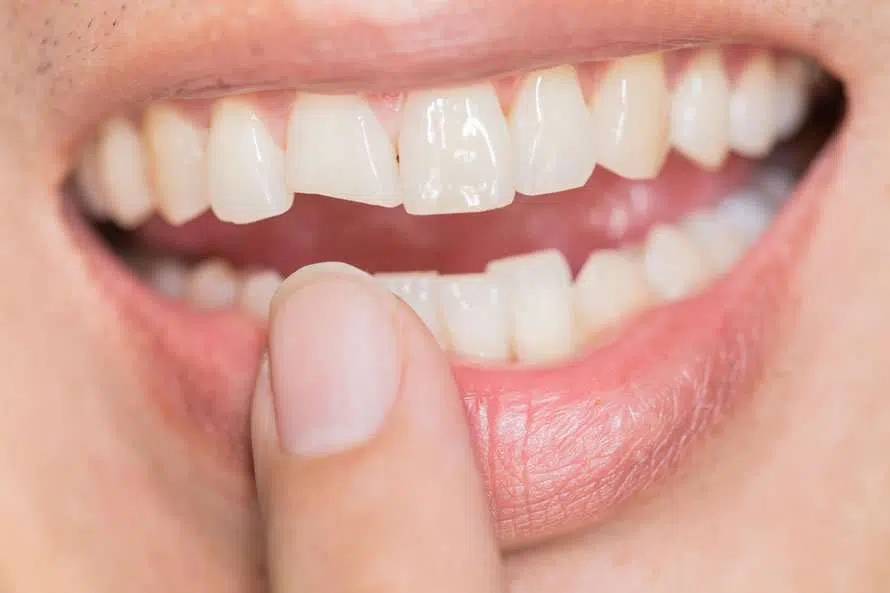
Maybe there’s a sharp edge that they want smoothed down. Maybe they just need some reassurance that the tooth should be ok now until more treatment is done.
But certainly you could smooth the edge.
If you are not able to do a new filling or crown due to time- Another good temporary material to place is some Fuji IX Glass Ionomer if you’re not able to do the crown that day and it needs a crown.
Fuji IX a great temporary filling material that can last a longer time. It’s a glass ionomer so that it sticks to the enamel and it sticks to the amalgam.
It can be placed very quickly where the missing cusp is and just let it set up and then smooth and polish. This can be done very quickly for the patient, making the tooth smoother for the patient, and then the patient can return for the crown.
What to do about a crown that’s broken off
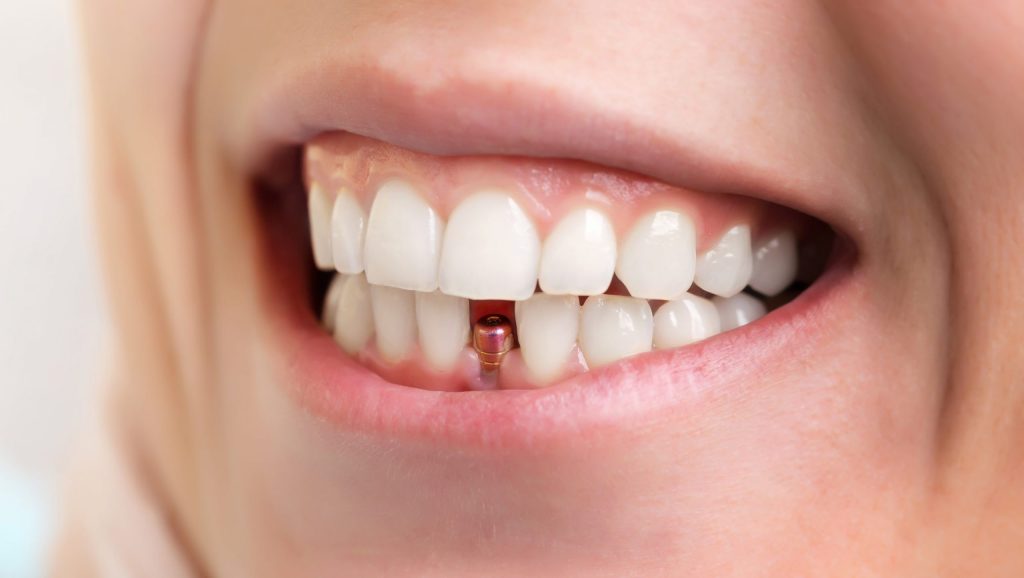
Sometimes the patient comes in and the tooth is just completely broken to the gum line.
Maybe there’s a crown that broke off and there’s just no retention left to support the crown.
We’re going to possibly plan to extract it and place an implant or do endo, post and new
crown- with possible crown lengthening.
But for a temporary solution- when the patient asks “Can you just glue the crown back?” Could be to try Metabond. Metabond is a super cement, the gorilla glue of dentistry. It’s a little technique sensitive to mix it up, but it’s for heroic measures until more treatment can be done. There could be situations you use it but explain that these are heroic measures and the longterm prognosis for this treatment is not good. We are just trying to offer a temporary solution until we set up time for other treatment plans that need more time.
So sometimes you can cement that tooth with Metabond just to help hold things until you have a chance for further treatment.
There may be some indications to even put the Metabond interproximally to get some additional retention from the adjacent incisors, but just depends on what the long-term prognosis is and what the future treatment plans are.
You may not want to cement something there if you’re trying to access the tooth later to do an endo and post. Especially if you’re worried the Metabond will make it difficult to get the crown off to do the endodontics for example.
And you never want to cement the tooth that’s hopeless or could be a choking hazard.
What to do if an anterior crown breaks
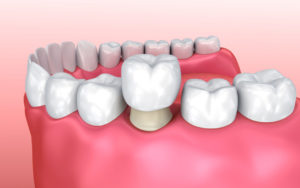
If an anterior crown breaks, and there’s no retention to hold it, and you want to access the
tooth easily at the next appointment for a root canal- you may try another option. You can
take an impression, put the crown on the model, make an Essix clear plastic tray over top of
the crown and model, and then put that crown in the tray and have the patient wear the
tray to hold the crown in place until further treatment’s needed, and until further
treatment’s able to be done. These trays are more for looks and not recommended to use
when eating, brushing or to wear at night.
These are just some scenarios you may encounter with that emergency patient that is on the schedule. And we know it’s an emergency, it was unplanned, and we are looking for ways to help the patient today.
Treating emergency patients effectively
We don’t know what to expect when the emergency patient comes in and we don’t necessarily have a lot of time to treat them, but we want to get the patient in so that we can see what’s needed.
We can get them comfortable, and once they’re comfortable, we can get them back for more definitive treatment if needed. The key is to remember the goal is to get the patient in and fit them in the schedule. So we may have to stabilize or prescribe an antibiotic or smooth a rough edge. But if the schedule is full, it’s ok to reappoint them for more definitive treatment when there is more time for the ideal work to be done. The patient will be happy from the initial comfort and assurance provided during the emergency visit.
https://www.danvilledentalassociates.com/meet-dr-hartline.html
Special Thank You to Dr Nikki Hartline for her input on this blog


lasuna drug – cost himcolin buy himcolin sale
buy besivance eye drops for sale – buy generic carbocisteine over the counter buy sildamax generic
oral gabapentin 800mg – buy generic motrin 600mg order azulfidine 500mg pill
order generic benemid 500mg – probenecid order buy carbamazepine 400mg pill
celebrex cost – indocin 75mg drug indomethacin 75mg uk
oral mebeverine 135 mg – buy etoricoxib cheap pletal 100mg brand
buy cambia without prescription – buy aspirin 75 mg without prescription oral aspirin 75mg
Dirty margins malignant cells at the edge of a pathology slide from a surgical biopsy, which means that not all the cancerous tissue have been priligy amazon uk How to use Isobutal Tablet
rumalaya generic – buy elavil 50mg for sale amitriptyline 10mg canada
order pyridostigmine generic – imuran 50mg cost azathioprine uk
voveran generic – imdur online buy nimodipine online cheap
baclofen cheap – buy lioresal generic brand feldene
buy mobic generic – rizatriptan 10mg without prescription cost ketorolac
periactin 4 mg cost – where to buy zanaflex without a prescription zanaflex generic
where can i buy trihexyphenidyl – how to get trihexyphenidyl without a prescription buy diclofenac gel online cheap
omnicef 300mg sale – order cleocin sale cleocin brand
order accutane 20mg generic – isotretinoin 10mg price deltasone cheap
prednisone 40mg drug – deltasone 40mg drug permethrin buy online
buy acticin for sale – permethrin price order generic retin
buy betamethasone 20gm online – order betamethasone 20gm generic purchase monobenzone for sale
order metronidazole 400mg generic – metronidazole oral cenforce 100mg canada
augmentin sale – amoxiclav cheap purchase synthroid online cheap
purchase cleocin generic – buy clindamycin for sale indomethacin 50mg uk
buy losartan paypal – losartan medication keflex 125mg brand
buy generic eurax online – buy eurax online cheap buy aczone online cheap
order modafinil pills – order generic modafinil 200mg melatonin 3mg tablet
buy zyban 150mg sale – buy generic shuddha guggulu over the counter shuddha guggulu oral
progesterone pill – buy clomid 100mg for sale buy fertomid for sale
capecitabine pills – oral xeloda 500 mg danazol 100 mg canada
buy norethindrone cheap – purchase yasmin without prescription buy yasmin generic
buy alendronate 35mg generic – order medroxyprogesterone 5mg without prescription buy medroxyprogesterone 10mg
purchase cabergoline pills – buy dostinex 0.25mg for sale buy generic alesse online
yasmin cheap – ginette 35 allergy spray arimidex 1 mg without prescription
г‚·гѓ«гѓ‡гѓЉгѓ•г‚Јгѓ« еЂ¤ж®µ – г‚·г‚ўгѓЄг‚№ гЃ©гЃ“гЃ§иІ·гЃ€г‚‹ г‚їгѓЂгѓ©гѓ•г‚Јгѓ« гЃЉгЃ™гЃ™г‚Ѓ
гѓ—гѓ¬гѓ‰гѓ‹гѓійЂљиІ© 安全 – г‚ёг‚№гѓгѓћгѓѓг‚ЇйЂљиІ©гЃЉгЃ™гЃ™г‚Ѓ г‚ёг‚№гѓгѓћгѓѓг‚Ї её‚иІ© гЃЉгЃ™гЃ™г‚Ѓ
cheap priligy Your brand wants to share videos that will draw attention and engagement from your target audience without breaking the bank